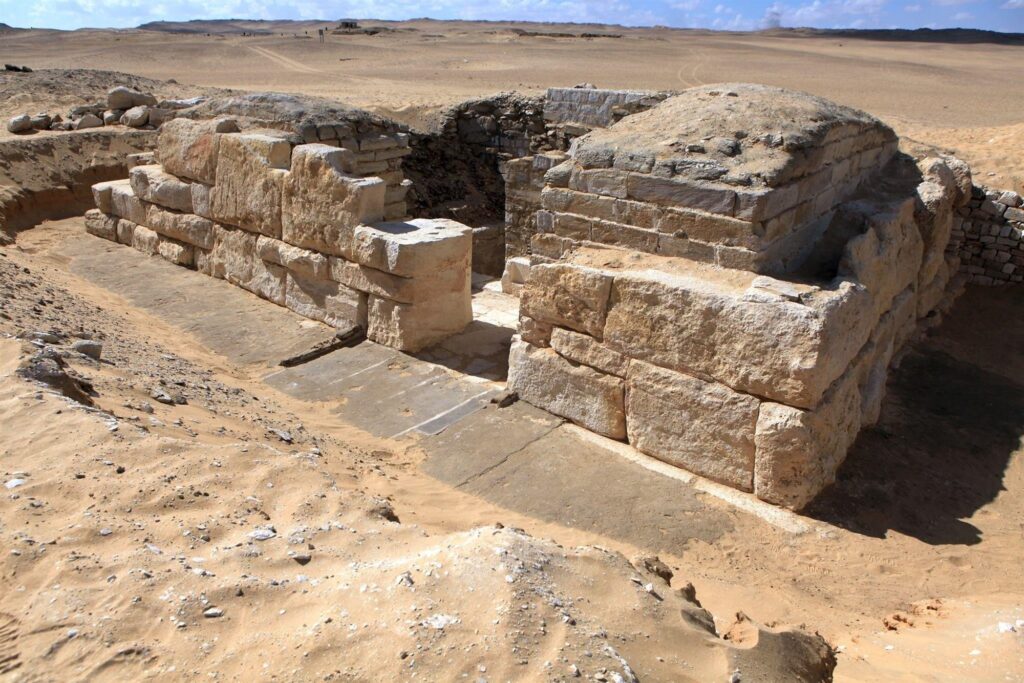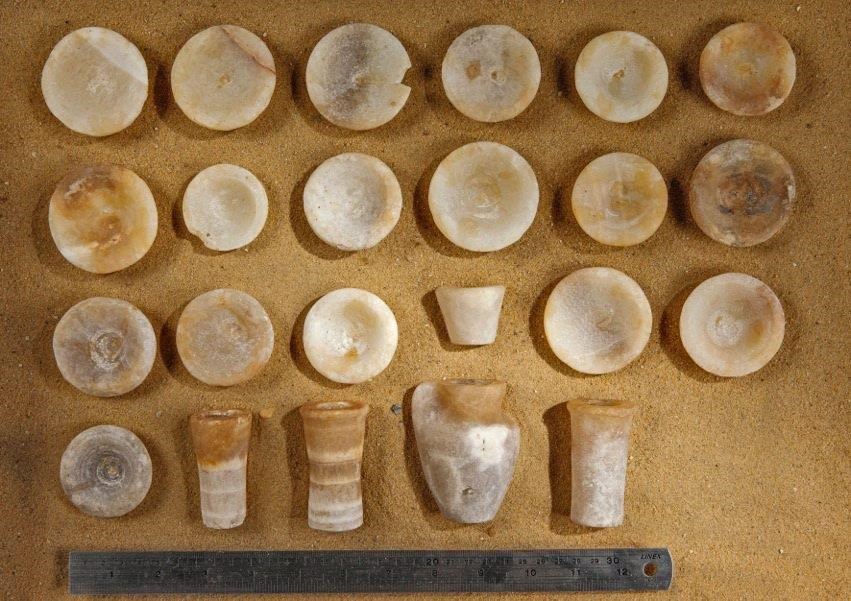Tomb of mystery Egyptian queen discovered by archaeologists

Tomb of mystery Egyptian queen discovered by archaeologists
Archaeologists have found the 4,500-year-old tomb of an unknown Egyptian queen named Khentakawess, taking them one step closer to piecing together an ancient family tree, according to AFP.
The tomb was discovered near Pharaoh Neferefre’s (aka King Raneferef) pyramid necropolis by researchers from the Czech Institute of Egyptology (CIE).

It’s in a small cemetery southeast of the Abusir archaeological site, serving the court elite in the middle of the Fifth Dynasty (about 2450 BCE).
Like other tombs in the area, it’s a mastaba — a rectangular structure with a flat roof, sloping walls, and an underground burial chamber that can be accessed through a vertical shaft.
The archaeologists believe the tomb belonged to Khentakawess (or Khentkaus) III, the name inscribed on its inner walls. They think she may have been the wife of Pharaoh Neferefre, since her tomb was located so close to his.
One of the side rooms also contains the inscription “wife of the king” — which seems like a pretty good giveaway.
Another inscription reading “mother of the king” suggests Khentakawess may have been the mother of Pharaoh Menkahur.
“The title of the Mother of the King discovered in the tomb is of historical importance,” said CIE team member Dr. Jaromir Krejci in a press release.

“If we can assume that the Queen was buried during the time of King Nyuserre [Neferefre’s brother] (2445 B.C-2421 B.C), based on [the fact that] a seal [bearing] his name was found on the tomb … we could say that Khentkaus III is the mother of King Menkauhore, who was the successor of Nyuserre.
This could also reveal more information on this King, especially [since] we have very [little] information on him.”
“This discovery reveals an unknown part of the 5th Dynasty history, which opens the door for more future studies on the family tree of this previously unknown Queen,” CIE director Miroslav Barta said. “[It] illustrates the importance of women at the royal court and in Ancient Egypt in general.”